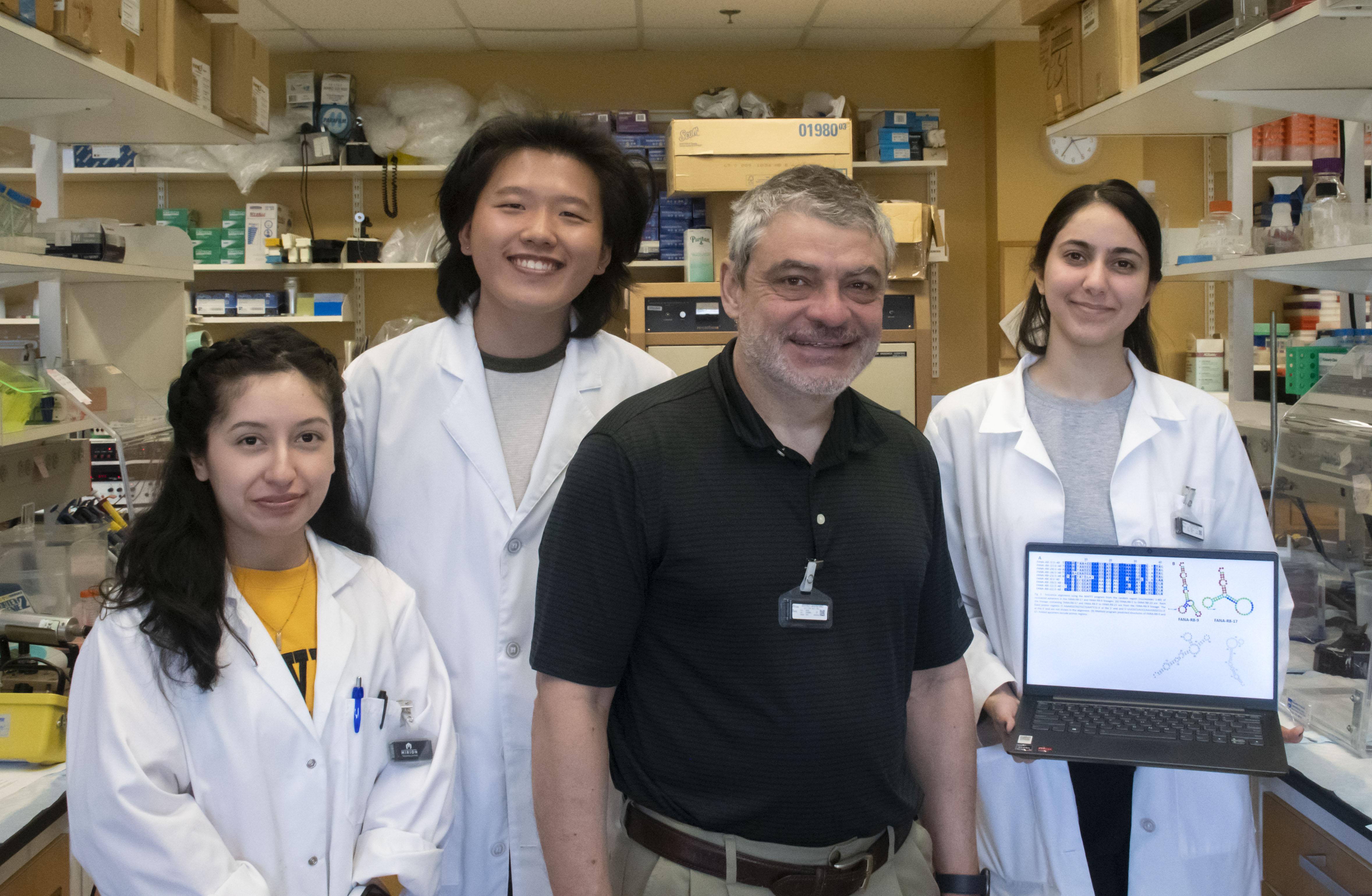
Since the emergence of COVID-19 over two years ago, this disease caused by the SARS-CoV-2 virus has had a monumental impact on society, with 514 million cases and 6.24 million deaths reported globally to date. It appears likely that COVID-19 will remain present for the foreseeable future, and as the third coronavirus to emerge as a human pathogen in the last 17 years, there is a clear possibility that others will arise in the future. Given this potential risk, the development of novel therapeutics targeting SARS-CoV-19 and new approaches that could be extended to emerging or future viruses are urgently needed. Researchers at the University of Maryland (UMD) are answering the call, using molecules called aptamers to target and prevent infection with COVID-19.
SARS-CoV-2 contains four structural proteins: the nucleocapsid (N), membrane (M), spike (S), and envelope (E) proteins, and infects the body by using the spike protein to attach to angiotensin-converting enzyme 2 (ACE2) receptors found on the surface of many cell types. Because the spike protein is critical for the entry of SARS-CoV-2, it is an attractive antiviral target. At present, antibodies can be used to neutralize the virus by blocking entry, though they are expensive to produce and have a minimal shelf life.
Professor Jeffrey DeStefano and postdoctoral associate Irani Alves Ferreira-Bravo—both from UMD’s Department of Cell Biology and Molecular Genetics, were inspired to use their lab’s knowledge of aptamers to expand and improve upon existing therapeutics for COVID-19. Their developments in fluoro-arabino nucleic acid (FANA) aptamers could help prevent initial infection with SARS-CoV-2.
FANA aptamers are small pieces of nucleic acid-mimicking material that were selected by the researchers to bind tightly to the spike protein on the surface of the SARS-CoV-2 virus. With the aptamers attached to the spike protein, the virus is then unable to attach to the ACE2 receptors in the body and thus, no infection can take place. This process is similar to that of antibodies, though FANA aptamers are more stable, less expensive, and do not require animals to produce. DeStefano and Ferreira-Bravo’s method shows promise not only as a preventative measure for COVID-19, but could be expanded to develop aptamers for other existing viruses or those that arise in the future.
The project was inspired by previous work on developing aptamers to HIV, and was funded through a grant from the National Institutes of Health (NIH) specific to their development for SARS-CoV-2. Further steps will include additional experimentation in animal models, followed by studies on humans to test safety and efficacy before the invention is likely applied as a nasal mist.
The researchers’ invention, “FANA Aptamers Prevent SARS-CoV-2 Infection,” was nominated for a UMD Invention of the Year award in the Life Sciences category. Winners were announced on May 3, 2022, at Innovate Maryland, a campus-wide celebration of innovation and partnerships at UMD.
